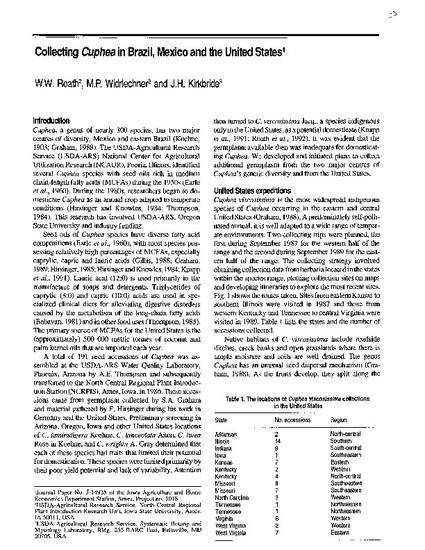
Article
Collecting Cuphea in Brazil, Mexico and the United States
FAO/IBPGR Plant Genetic Resources Newsletter
Document Type
Article
Disciplines
Publication Version
Published Version
Publication Date
1-1-1993
Abstract
Cuphea, a genus of nearly 300 species, has two major centres of diversity, Mexico and eastern Brazil (Koehne, 1903; Graham, 1988). The USDA-Agricultural Research Service (USDA-ARS) National Center for Agricultural Utilization Research (NCAUR), Peoria, Illinois, identified several Cuphea species with seed oils rich in medium chain-length fatty acids (MCFAs) during the 1950s (Earle et al., 1960). During the 1980s, researchers began to domesticate Cuphea as an annual crop adapted to temperate conditions (Hirsinger and Knowles, 1984; Thompson, 1984). This research has involved USDA-ARS, Oregon State University and industry funding.
Rights
Works produced by employees of the U.S. Government as part of their official duties are not copyrighted within the U.S. The content of this document is not copyrighted.
Language
en
File Format
application/pdf
Citation Information
W. W. Roath, M. P. Widrlechner and J. H. Kirkbride. "Collecting Cuphea in Brazil, Mexico and the United States" FAO/IBPGR Plant Genetic Resources Newsletter Vol. 93 (1993) p. 29 - 33 Available at: http://works.bepress.com/mark_widrlechner/89/

This article is from FAO/IBPGR Plant Genetic Resources Newsletter 93 (1993): 29.